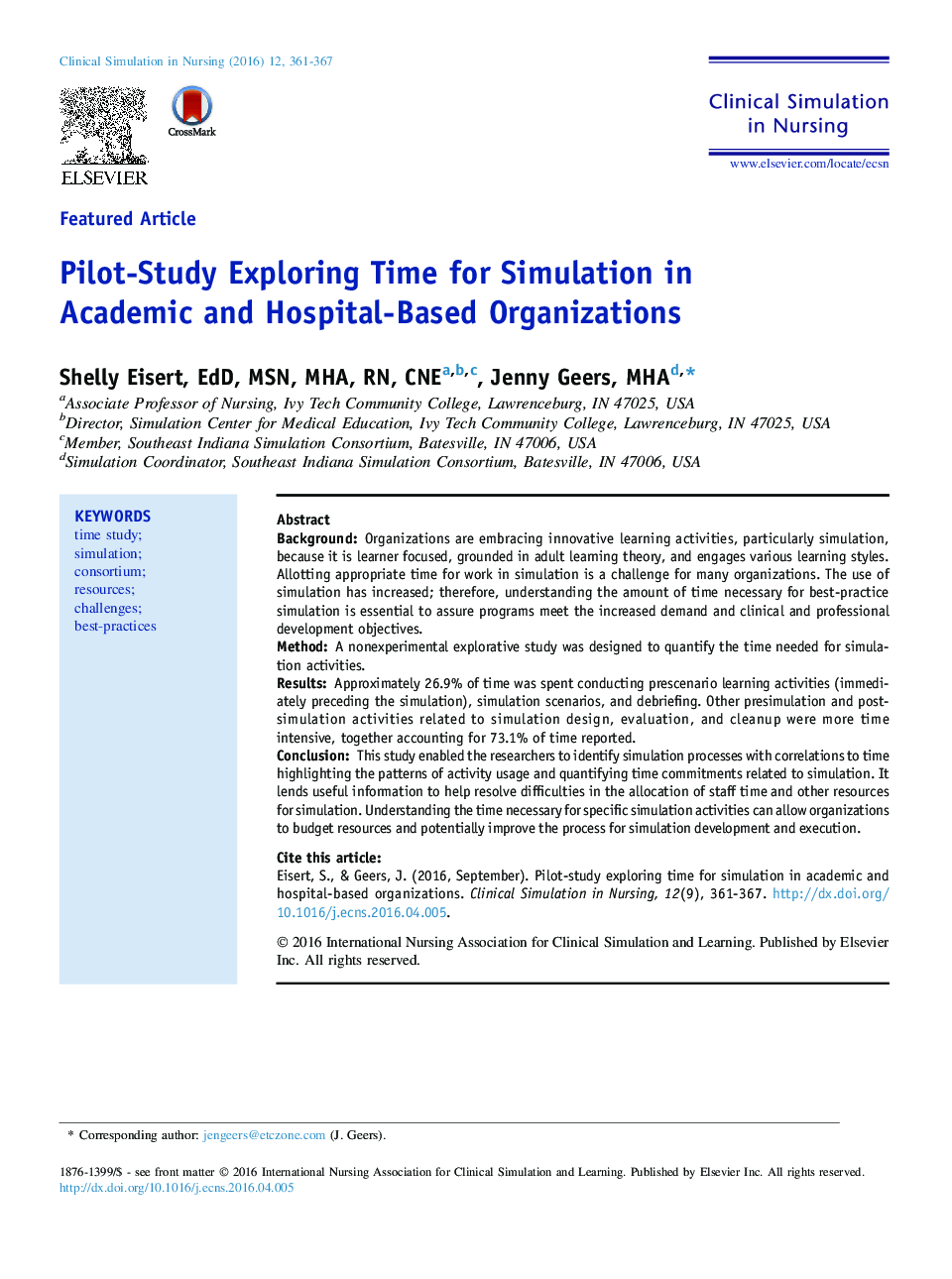| Article ID | Journal | Published Year | Pages | File Type |
|---|---|---|---|---|
| 2646874 | Clinical Simulation in Nursing | 2016 | 7 Pages |
•The appropriate allowance of time is a major barrier for conducting best-practice simulation and budgeting resources for simulation processes.•Of the 15 simulation activity codes reported in this study, time spent with learners accounted for only 26.9% of simulation time. Presimulation and postsimulation activities required 73.1% of time reported in this study.•The 69 simulations reported in this study accounted for 22,341 minutes, averaging 232.8 minutes (5.4 hours) for each simulation, assuming each simulation required each of the 19 activity codes logged.
BackgroundOrganizations are embracing innovative learning activities, particularly simulation, because it is learner focused, grounded in adult learning theory, and engages various learning styles. Allotting appropriate time for work in simulation is a challenge for many organizations. The use of simulation has increased; therefore, understanding the amount of time necessary for best-practice simulation is essential to assure programs meet the increased demand and clinical and professional development objectives.MethodA nonexperimental explorative study was designed to quantify the time needed for simulation activities.ResultsApproximately 26.9% of time was spent conducting prescenario learning activities (immediately preceding the simulation), simulation scenarios, and debriefing. Other presimulation and postsimulation activities related to simulation design, evaluation, and cleanup were more time intensive, together accounting for 73.1% of time reported.ConclusionThis study enabled the researchers to identify simulation processes with correlations to time highlighting the patterns of activity usage and quantifying time commitments related to simulation. It lends useful information to help resolve difficulties in the allocation of staff time and other resources for simulation. Understanding the time necessary for specific simulation activities can allow organizations to budget resources and potentially improve the process for simulation development and execution.
